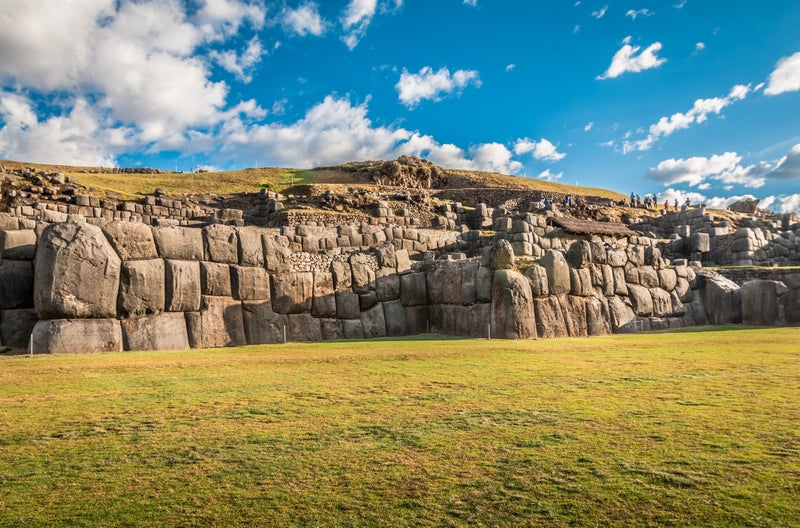ARCHAEOLOGISTS have unearthed a vast ancient pyramid that was hidden for millennia, right next to a revered sacred city. They have hailed the find as an opportunity to shed new light on the earliest advanced civilisation in the Americas. The new pyramid has been dug out at the Chupacigarro archaeological site, just one kilometre west of the world heritage site Caral in the Supe Valley, west Peru. The discovery was made by the team dedicated to exploring the area around the sacred city, known as the Caral Archaeological Zone.
![[Aerial view of the Chupacigarro archaeological settlement in Peru.]](https://www.thesun.co.uk/wp-content/uploads/2025/02/chupacigarro-archaeological-settlement-peru-969154671.jpg?strip=all&w=960)
It is thought the pyramid site - named Sector F - was an extension of the main city. For thousands of years, it lay beneath earth and shrubs, but then the scientists came across vertical stones - "huancas" - marking out the corners of a building. They also signify the site as one of ceremonial importance. The footprint of the ancient structure is rectangular, and features a central staircase that once led up to a towering summit.
![[Excavated ruins of a 5,000-year-old pyramid in Peru.]](https://www.thesun.co.uk/wp-content/uploads/2025/02/chupacigarro-archaeological-settlement-peru-969154686.jpg?strip=all&w=960)
It consists of 12 smaller areas scattered across nearby hilltops that historians think were used for ceremonies or other aspects of public life. Around the outside, archaeologists also came across the ruins of numerous houses. These discoveries point to the site being a small urban centre - a suburb of the main sacred city Caral. The central pyramid is formed of at least three overlapping platforms that stacked up to form the body.
![[Illustration of a newly discovered pyramid near Caral, Peru, with a map showing its location.]](https://www.thesun.co.uk/wp-content/uploads/2025/02/JB_11_02_PERU-PYRAMID_d86d7a.jpg?strip=all&w=839)
It also featured a sunken, central pillar. One of the most astonishing finds in the dig was a massive "geoglyph" - meaning a design marked on the earth - of a human head. The huge artwork was over 62 metres long and 30 metres wide. The Chupacigarro archaeological site sits next to a small stream running through a ravine, which would have supplied water to the ancient Peruvians living there. The ravine would also have allowed a channel for trade between inland settlements and people living on the coast.
![[Illustration of a 5,000-year-old pyramid structure in Peru and its location within the Chupacigarro archaeological settlement.]](https://www.thesun.co.uk/wp-content/uploads/2025/02/chupacigarro-archaeological-settlement-peru-969154692.jpg?strip=all&w=960)
The pyramid is part of a broader network of settlements around Supe Valley. It was built by people of the Caral civilization, which thrived in ancient Peru for over a thousand years. The modern Peruvian government hopes the fascinating new find will attract more visitors interested in the area's past. THE Caral people were an ancient civilisation that lived in modern-day north-central Peru. They were most established between 3500 and 1800 BC - making them the earliest advanced society in the Americas.
![[Aerial view of the Aspero ruins in Peru.]](https://www.thesun.co.uk/wp-content/uploads/2017/10/nintchdbpict000359556893.jpg?strip=all&w=960)
The group is significant because they are one of the six societies from where civilisation is thought to have separately bloomed. The Caral developed at least 30 major settlements which were concentrated near the South Pacific coast of western Peru. They were incredibly capable farmers compared with other civilisations from that era, and cultivated cotton plants which they used for fishing nets or clothing.






















